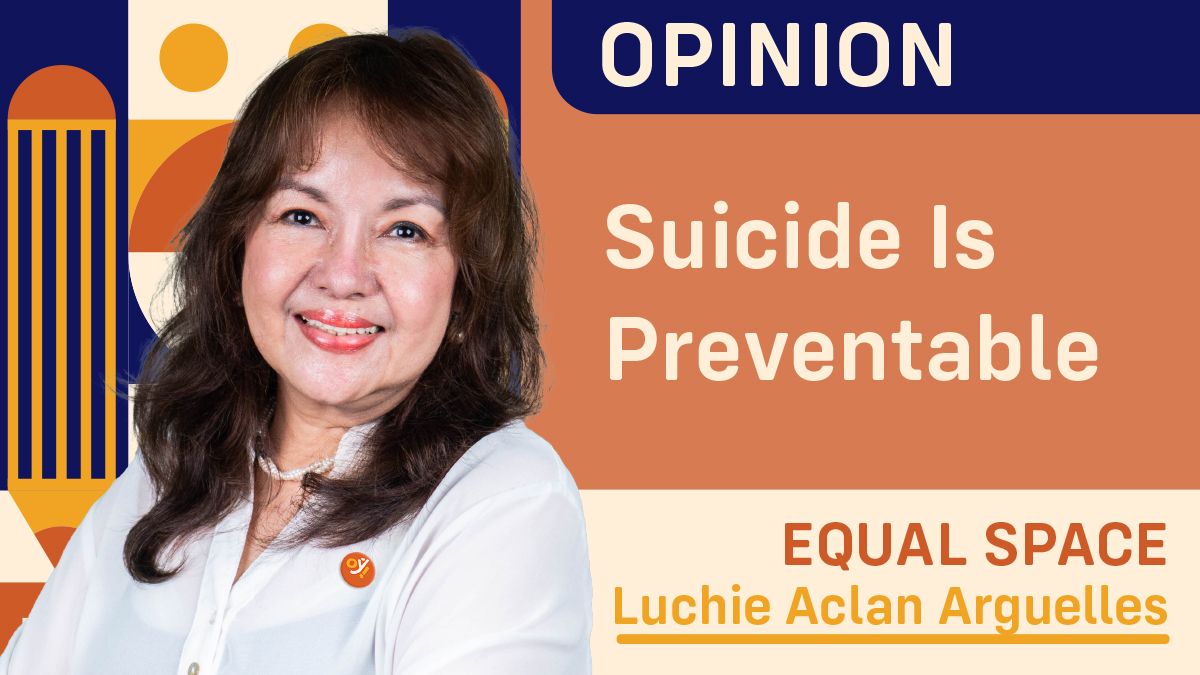Every suicide death is a tragedy that leaves an inexpressible stigma to the whole family. This is bound to last a lifetime aside from fact that etched is the eternal feeling of guilt among them.
From my December 2023 column on this subject, I wrote "Guilt — and just the thought of "feeling responsible" — is a struggle as it will take a long time for those left behind to come to terms with the very nature of this cause of death of a family member.
"Compounding this, so much 'what ifs' and 'could haves' hover. Red flags or signs may have been missed. Then, anger sets in that those left behind may experience suicidal thoughts of their own.
"Can we really second guess or would we have done anything differently?"
When this tragic situation presents itself, there is absolutely nothing that can appease each member of the family.
Second Leading Cause Of Death
And with an unchanged statistics from this December column, the number and prevalence of suicide stays on.
"According to World Health Organization's Statistics Data Visualizations Dashboard, the second leading cause of death among those aged 15 to 24 years old worldwide is suicide. No. 1 is accident or unintentional injury.
"Statistics from across the globe shows that nearly 800,000 people die by suicide annually. This is roughly one death every 40 seconds.
"In the latest Philippine records dated 2019, around 2.2 deaths relating to suicide were recorded per 100,000. During the global pandemic in 2020, deaths caused by intentional self-harm had nearly doubled. The 2019 figure of suicide cases is constant in 2022-23."
Later studies show that men (and boys) are more likely to die by suicide than women (and girls), with some estimates suggesting men are three times more likely to take their own lives. Although women attempt suicide, most of them survive.
Mental or Public Health Concern?
We look at suicide as a mental health concern. Shouldn't this be recognized more as a public health problem? In doing so, the community and government could prevent the increasing rate.
Rates could change with time by maintaining advocacy strategies for greater understanding and support for those showing signs of suicidal tendencies.
Suicide prevention efforts could start from improving better mental health and reduce the stigma of patients suffering from it by making accessible health services and helplines.
Availability of counseling and therapy — and medication, if possible — are potent forms of crisis intervention that will encourage those struggling with it to seek help.
Hope Through Action
Today, September 10, is World Suicide Prevention Day, initiated in 2003 by the International Association of Suicide Prevention, in collaboration with the World Health Organization and the World Federation for Mental Health. This year's campaign theme is "Creating Hope Through Action."
The organizers encourage global and country initiatives in increasing awareness about suicide, educate the public, and encourage open discussions about mental health.
In the Philippines, where there is higher statistics of suicide, our national officials could very well help by their action in crafting policies and programs on suicide prevention and training more community healthcare workers who could be in the forefront of identifying those needing help.
Suicide, as we are aware of, is a preventable cause of death. But this could be done when the government, community, and individuals agree to work together to help reduce its number of incidents.
The significance of focusing on mental health as a general public health concern is the highlight of the World Suicide Prevention Day, addressing all regrdless of age, gender, and social status.
(email opinyon.luchie@gmail.com, luchiearguelles@yahoo.com)
#WeTakeAStand #OpinYon #OpinYonColumn #ColumnbyLuchieAclanArguelles #EqualSpace #SuicideIsPreventable #MentalHealthMatters #WorldSuicidePreventionDay
